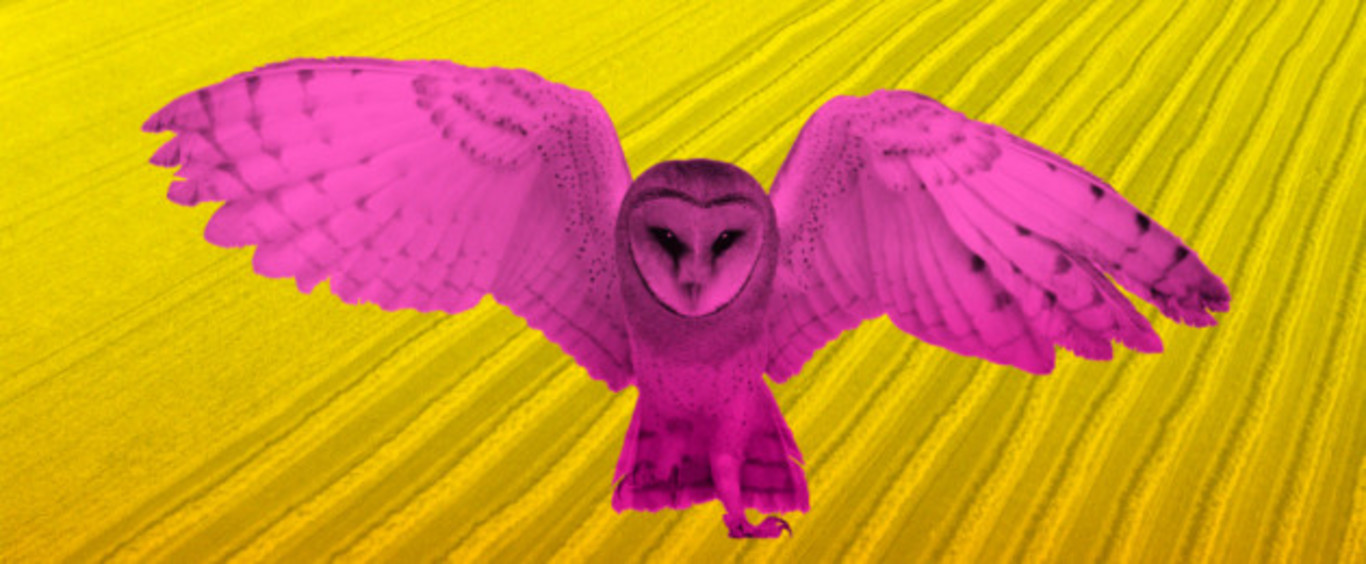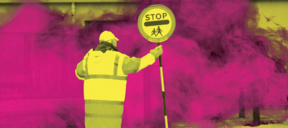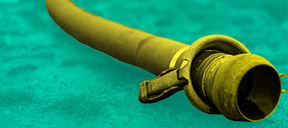Loss of Ireland's biodiversity is accelerating - and we're missing the chance to halt it
Noteworthy reveals virtually no protected sites have management plans and Ireland is moving further away from a target for effective nature conservation.

IRELAND IS MISSING its chance to protect its dwindling biodiversity with several iconic species of bird, fish and mammals under threat.
Globally, the loss of our natural world is proceeding in an unprecedented manner, with a human handprint leaving one million species under the threat of extinction.
This is the stark finding of a landmark 2019 UN assessment on biodiversity loss that warned the unprecedented loss of species will be further accelerated unless urgent action is taken to tackle the key drivers of biodiversity loss.
At present, the global rate of species extinction is already tens to hundreds of times higher than it has averaged over the past 10 million years. Here at home, several iconic species such as the curlew, corncrake and Atlantic salmon are under threat.
Concerns have been raised by ecologists, conservation experts and environmental NGOs that authorities are not doing enough to ensure their protection, as well as the habitats on which they depend.
Over the past two months, Noteworthy has examined the State’s record in biodiversity protection as part of its ENDANGERED SPECIES investigation.
The team spoke to biodiversity and ecological experts, examined scientific papers and state reports, and analysed data on the condition of our natural world.
Our findings show that:
- Recent biodiversity audits paint a worrying portrait, with a quarter of birds a serious conservation concern, 77 species of plants and animals considered endangered and only five of 59 habitat types in a favourable condition.
- Only a small fraction of the targets under our National Biodiversity Action Plan have been completed, including critical action points such as developing management plans for our national park network.
- Biodiversity experts and environmental economists are also concerned with the lack of measurable results-based targets under the current plan.
- Recent EU audits and reports are critical of the State’s management of our protected nature sites, citing insufficient ecological knowledge that make it difficult to establish effective conservation measures.
- Just over 60% of legally protected nature areas have conservation objectives that are specific to the species and habitats they are designated to protect, while virtually no sites have management plans, well below the EU average.
- The European Commission has 15 open infringement cases against Ireland over environmental issues that an expert forum has said points to the State’s role as the “biggest transgressor of environmental law in Ireland”.
In Part Two, out tomorrow, we examine how poor State financing of biodiversity protection has influenced these problems and highlights some of the solutions to help nature thrive.
—
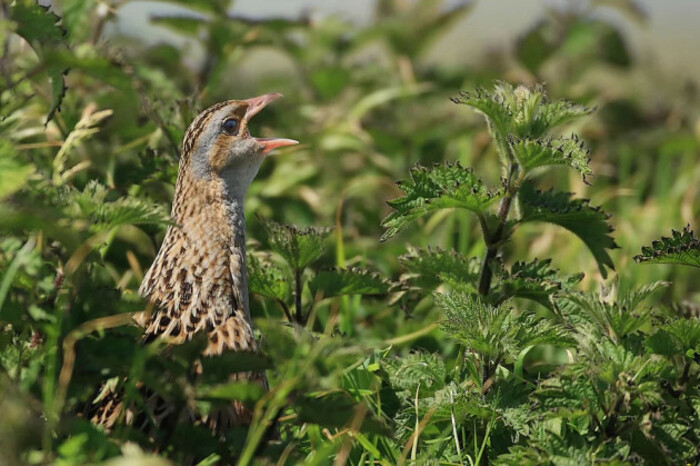 The call of the corncrake, as well as that of many iconic species, may soon be silent across the island
The call of the corncrake, as well as that of many iconic species, may soon be silent across the island
Worrying trends for troubled species
Every six years, the State must send a detailed assessment to Brussels on the status of habitats and species that Ireland is required to protect under the EU Habitats Directive – better known as the Article 17 reports.
The detailed reporting serves as a benchmark for the status of biodiversity in Ireland, and the latest report paints a bleak picture of the condition of many of our at-risk species.
Just over half of the 60 species in Ireland protected under the Habitats Directive are in a favourable condition, while a whole host of important habitats and the species that depend on them are in poor or inadequate condition, including the freshwater pearl mussel, Atlantic salmon, and the once common marsh fritillary butterfly.
The latest checklist of all protected and threatened species in Ireland released in 2019 also assessed hundreds of additional species in line with International Union for Conservation of Nature guidelines, the most comprehensive globally-recognised approach for evaluating the conservation status of plant and animal species.
It classified 77 species as critically endangered, including the angel shark, the European eel, and three species of pearl mussel, while a further 126 species are listed as endangered, including the basking shark and natterjack toad.
There are also 30 species of bees that are threatened and listed as either critically endangered, endangered or vulnerable, together with various species of rays, freshwater fish, moths, beetles, plants and mosses.
Bird numbers swooping dangerously low
Birds – which are good indicators of the general health of ecosystems – are assessed under a separate system known as the Birds of Conservation Concern list.
The latest list released earlier this year is also striking, pointing to a 46% increase in Red-listed species – those of highest conservation concern. We have created a table here of the ranking of all birds monitored in Ireland since 2007.
A total of 54 birds, a quarter of all surveyed, are now on the red list. This designation is serious, as, to fall under this category, species must experience a population decline of at least 50%, as well as a 70%-plus reduction in distribution across the island.
This is the highest number to date and includes the much-loved puffin and other iconic species such as curlew and corncrake, with breeding populations of both species at risk of disappearing from our island.
A key reason for the decline of all three species is the impact on their habitats from agriculture, forestry, fisheries, peat extraction, pollution and climate change.
The latest Article 17 report, released in 2019, states that 54 of the 59 habitats assessed were in an unfavourable state – with the condition of 46% of habitats declining since the last report in 2013 – including estuaries, shallow bays, reefs, our unique raised and blanket bog networks, fens and mires, our old oak woodlands and orchid-rich grasslands.
According to the UN, the future prospects of Ireland’s habitats, and the species that depend on them, will require considerable management effort to improve their condition and reduce the impacts of pressures.
As a party to the UN Convention on Biological Diversity (CBD), Ireland has committed to improve this situation by preparing multi-year National Biodiversity Action Plans (NBAP) with the overarching goal to ensure that “biodiversity and ecosystems in Ireland are conserved and restored”.
Biodiversity plan falling down
To date, we have had three plans, the most recent of which covers the five-year period from 2017 to the end of 2021 and contains over 100 actions in a bid to achieve the overarching goal, as well as to improve management of protected areas, mainstream biodiversity into decision-making, and increase public appreciation of our natural world.
The mid-term review of the plan points to several success stories, including the use of EU funding for projects to support conservation, management and restoration of habitats.
Other areas of progress highlighted include funding of over 20 European Innovation Partnership (EIP) projects, mainly results-based agri-environmental schemes designed to protect species such as the hen harrier and the freshwater pearl mussel.
The establishment of a national curlew task force and the doubling of funding to Local Authorities to develop local biodiversity action plans are also noted as success stories.
Overall, however, the review found that only eight actions were fully implemented, 13 showed only limited progress, and the vast majority of actions (98) were ongoing.
There is still some distance to go to achieve many key ongoing actions, according to an internal National Parks and Wildlife Service (NPWS) presentation released to Noteworthy following an Access to Information on the Environment (AIE) request.
The presentation from January 2020 - one month before the release of the interim review – stated that many actions in progress “may need a lot more work”.
The presentation noted that more progress is needed in 10 areas, including key ones such as expanding Ireland’s network of protected marine areas, tackling invasive species, enhancing funding opportunities and expanding expertise across the Government.
There appears to have been little progress since then, with the terms of reference for a review of the NPWS released this March stating that many actions in the plan “are likely to be at best only partially achieved”.
Little progress since mid-term review
Noteworthy requested an update on actions from the NPWS via AIE. The data, updated to the start of June this year, shows that little to no progress had been made since the mid-term review. No additional actions were completed and there still remains limited progress on 113 actions.
This includes important activities such as implementing actions outlined in the State’s plan to protect biodiversity from the impacts of climate change released in late 2019, publishing legislation to provide a legal basis for our network of six national parks, and increasing the connectivity of our network of protected areas.
Noteworthy put a series of questions about the plan to the Department of Housing, under which the NPWS sits, but it said that, “owing to pressure concentrated on priorities,” it was “not able to supply the information sought in the timescale requested”.
“We will keep the queries on file and revert to you when exigencies allow,” the Department said. It was given over four weeks to reply.
A January 2021 review by the National Biodiversity Forum - an expert body with members drawn from landowner representatives, environmental groups and academia set up to advise the State on implementation of the plans – was scathing in its criticism of the level of progress achieved.
It said that the most recent plan, together with preceding plans, “has not succeeded in halting or reversing the negative biodiversity trends in Ireland” and lacks the urgency required to tackle the biodiversity crisis.
It warned that, at present, Ireland offers little more than “paper protection” for its designated protected areas that are “supposed to be the national jewels in the crown of our land”. Instead, the forum’s review said, “they are inadequately managed and in poor condition, with few exceptions”.
Ireland behind the curve on protected areas
These sites form part of the EU Natura 2000 network of nature areas legally protected for certain habitats and species. Currently, just over 9,000km, or 13% of Ireland’s terrestrial area, is included in the Natura 2000 network.
Sites are designated as either a Special Area of Conservation (SAC) for habitats and the flora and fauna they support, or as a Special Protection Area (SPA) for bird species that are vulnerable across the EU.
In order to effectively manage the network, EU member states are required to develop conservation objectives specific to each protected site to maximise the conservation of the habitats and species designated for protection. These objectives should then be translated into action through management plans.
Where site-specific conservation objectives (SSCOs) have not yet been developed for the site, a Member State can use generic conservation objectives. This is supposed to be for a short period of time, however, as SSCOs should be established within six years of a site’s designation as a protected area.
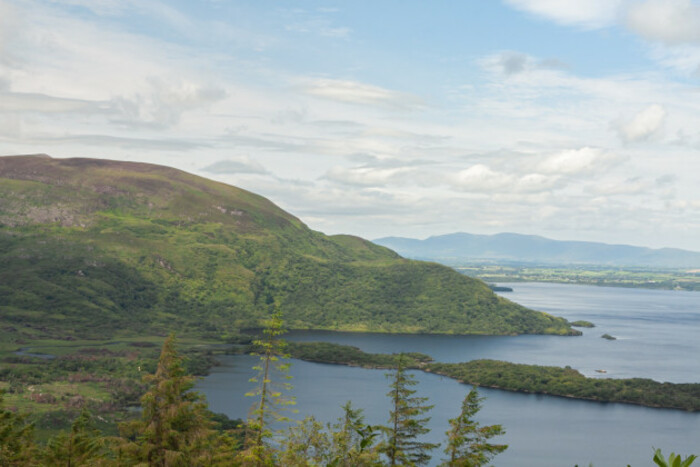 Killarney National Park
Killarney National Park
Conservation measures in short supply
An analysis of NPWS files on all protected areas carried out by Noteworthy shows that, while SSCOs have been prepared for 327 of 437 SACs, detailed SSCOs have been prepared for only 37 of 154 SPAs to date – just 24% of the SPA network.
Our analysis also shows that, in over 350 cases, SSCOs were set after the six year deadline, and in some cases, well after the expiry of the deadline. In over 260 of these cases, it took between 15 and 23 years for the State to set site-specific objectives.
For example, it took over 20 years to set them for the Killarney National Park, Macgillycuddy’s Reeks and Caragh River Catchment SAC that takes in over 75,500 hectares (ha) of land, including blanket bog, old sessile oak woods, and wet heaths.
The large site is also designated to protect important species such as freshwater pearl mussel, the marsh fritillary butterfly, otter, and lesser horseshoe bat.
Other large protected sites such as the 49,000ha Connemara Bog Complex SAC, the 25,000ha Lough Corrib SAC and and the 30,000ha Wicklow Mountains SAC also waited in excess of 15 years to receive site-specific conservation objectives.
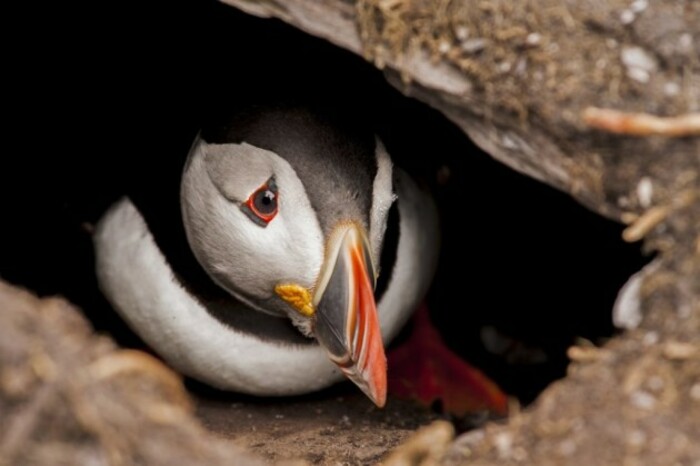 A Puffin on Skellig SPA that still does not have site specific conservation objectives or a management plan
A Puffin on Skellig SPA that still does not have site specific conservation objectives or a management plan
In 33 of the SPA cases, the site specific objectives were set after the six-year deadline, taking between 10 and 20 years to set in 18 cases, and over 20 years in a further 11 cases.
For example, it took 29 years to set site-specific objectives for the North Bull Island SPA that supports important wetland and waterbird species such as curlew, golden plover, brent goose, and redshank.
A further 128 sites still only have generic conservation objectives in place. Over 110 of these sites were classified as SPAs over a decade ago, including 34 sites waiting over 25 years for site-specific measures to be put in place.
This includes Puffin Island SPA and Skelligs SPA off the coast of Co Kerry classified in 1985 and 1986 respectively to protect the iconic, and now vulnerable, puffin, as well as other important species such as kittiwake, fulmer and manx shearwater.
According to the State’s plan for habitat and species protection in Natura 2000 sites for 2021-2027, a programme for setting detailed site-specific conservation objectives for the remaining SPAs will be put in place during this period.
Lack of management plans
Coupled with this issue is a lack of management plans to implement any conservation objectives that are set for the protected areas – specific or generic.
While progress in the designation of protected nature areas for habitats and species is highlighted as a success in the action plan mid-term review, it states that more work is needed to develop management plans for them.
The State’s 6th national report to the UN Convention on Biological Diversity in 2019 stated that we are actually moving away from our target for bringing Natura 2000 sites under effective conservation management by 2020.
To date, only 53 management plans have been prepared for sites within the SAC network, with no management plans in place to date for any sites in Ireland’s SPA network.
A European Environment Agency (EEA) audit report released last year went into further detail on Ireland’s failings in this regard. It found that plans “do not address the requirements of the habitats and species that the Natura 2000 site was designated for”.
It also identified that we “lack a systematic approach to establishing conservation measures linked to the site’s specific conservation objectives and pressures and threats”.
According to Pádraic Fogarty of the Irish Wildlife Trust, who is also a member of the National Biodiversity Forum, there are potentially very serious consequences from this.
“Having site specific conservation objectives is a legal requirements but what’s the point of having them if they’re not linked to management measures. There’s really little point to them.
“It has a very negative impact when you have the lines on the maps [and] to some extent you have legal protection for these areas but because you have no management, a lot of them are still deteriorating,” said Fogarty.
The Department of Housing did not provide statements on several questions posed by the investigative team on these issues.
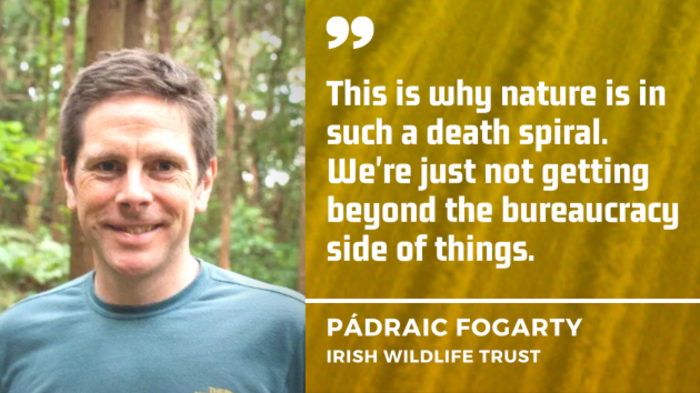
Ireland in the dock
Another issue is the lack of legal standing for many protected areas in Ireland. Prior to official designation as an SAC, for example, the proposed protected areas are nominated as ‘Sites of Community Interest’ (SCIs). According to EU law under the Habitats Directive, member states must then designate the protected areas under their national law within six years.
In April 2016, the European Commission called on Ireland to accelerate its efforts to formally designate SACs and a Court of Auditors report in 2017 found that Ireland had only designated five of 424 sites as SACs by January 2016 within the six years deadline, faring very poorly compared to most EU neighbours.
For example, Hungary, Latvia, Estonia, Denmark, Greece, Luxembourg, and Sweden designated all the required sites by the deadline. The overall EU average was 66% compared to just 1.18% in Ireland.
An analysis of the latest available data on the NPWS website indicates that just over 270 sites are now legally designated as SACs, with over 260 sites waiting between 12 and 22 years to be put on a legal standing in Ireland.
There are similar issues with the SPA network, with a Noteworthy analysis of NPWS data indicating that it took over six years before 81 sites were designated under national legislation. In 60 cases, it took over 10 years before the sites were legally designated, and over 20 years in 14 cases.
There are no records to indicate that a further 14 sites have been legally designated as SPAs, including the Killarney National Park SPA that was classified as an SPA for merlin and greenland white-fronted goose in February 1995.
The European Commission has started infringement procedures against Ireland for not designating SAC sites within the deadline. Ireland has been in trouble before with the EU for not doing enough in this area.
In 2007, the European Court of Justice found that we had not designated a sufficient number of protected areas for in-troubled species such as corncrake and hen harrier, and did not meet the standard for the level of protection needed in many sites protected for other bird species.
This case – known as the Birds Case – is one of 15 open infringement cases against Ireland based on compliance with EU environmental law that the National Biodiversity Forum said points to the role of the State as “the biggest transgressor of environmental law in Ireland”.
The Department of Housing did not provide statements on several questions posed by the investigative team on these issues.
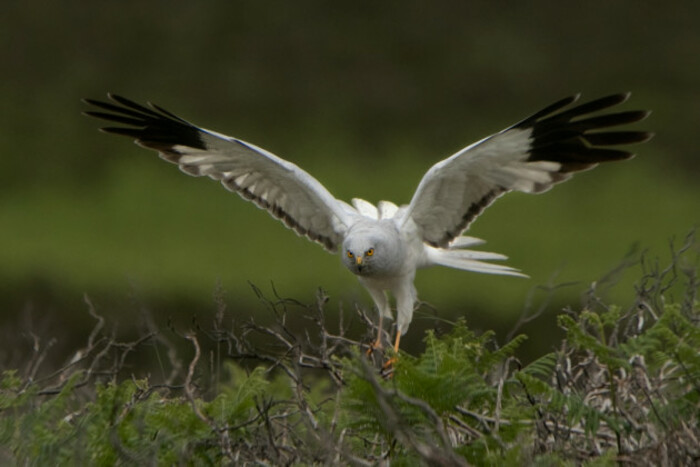 The hen harrier is under threat in Ireland
The hen harrier is under threat in Ireland
Delays leave species at risk
While we wait for management plans to be put in place, already threatened species are put at risk, according to biodiversity experts who spoke to Noteworthy.
This includes the hen harrier, one of Ireland’s rarest breeding raptor species, that has seen its population plummet in recent decades. The latest survey in 2015 estimated a breeding population of between 108 and 157 pairs – a decrease of 34% since the original national survey in the late 1990s.
According to Fintan Kelly of BirdWatch Ireland, the species decline is of major concern as it is an “umbrella species for the health of biodiversity in the uplands and farmland biodiversity in general”. If the hen harrier is in trouble, Kelly said, then other red list species, such as red grouse, kestrel, meadow pipit, and curlew are likely in trouble too.
“So it’s definitely not just about hen harriers, if you were to try to identify high nature value conservation landscapes, the hen harrier would be at the centre,” Kelly said.
Despite these concerns, there are still no detailed site specific objectives for the network of six hen harrier SPAs – designated in 2007 – despite clear requirements under the Habitats Directive that they are set within six years of designation. The SPAs are estimated to support almost half of the national hen harrier population.
“They should have had all these targets set out by 2013. So the fact that we haven’t done it is shocking,” according to Ryan Wilson-Parr of the Irish Raptor Study Group. “It’s just like it’s been pushed down the road, trying to avoid it, trying to find a way around it.”
Conservation objectives for the site were uploaded by the Department in early 2021, however, they are generic objectives that Kelly said “are the same conservation objectives that have always been in place since designation came into effect”.
“Site specific conservation objectives with specific targets for the population are essential to have adequate management of those sites and they’re long overdue,” he said.
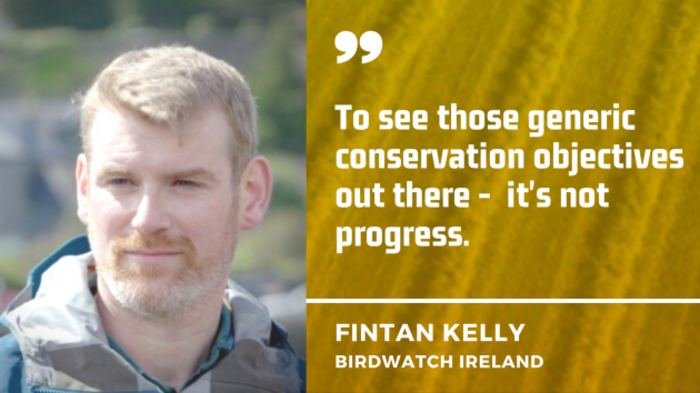
A key concern identified by both experts is that the lack of conservation objectives is delaying measures that would otherwise allow the species to regain a foothold in the Irish landscape, such as heavily restricting conifer plantation forestry in the SPA network that is widely accepted as a key threat for the species.
It was predicted in 2006 that afforestation and the maturing age of current plantations would drive the loss of open habitat for the species beyond critical levels by 2015.
The Forest Service suspended approval of afforestation licences in the SPA network in 2013 pending the development of a Threat Response Plan for the conservation of the species led by the NPWS and an interdepartmental group.
A consultative committee was also established, made up of stakeholders from the Forest Service, Coillte, and other interest groups from forestry, agriculture, wind energy, and conservation experts, including Kelly and Wilson-Parr.
Protective plan delayed by years
The plan was set to be completed by mid-2015, however, it is still to be completed, with the final meeting of the inter-departmental group to review a draft plan taking place in May 2021.
A draft was released to Noteworthy under AIE in early July that proposes forestry operations can continue in the SPA network. This was strongly criticised by both Kelly and Wilson-Parr in light of research that the current level of forestry in the hen harrier SPA network is above the threshold at which it can have a negative impact on the species.
“Within that plan, there are proposals for further afforestation within the SPAs. So that kind of measure is totally unacceptable. And it’s totally incompatible with the conservation of the species,” Kelly said.
“If Ireland does not comply with our obligations to protect the hen harrier within these sites and the broader landscape, then what does it mean for nature conservation and the rule of law in general,” he added.
Noteworthy put a series of questions to the Department of Housing on this issue but it did not provide any replies, citing “continued pressure concentrated on priorities” within the NPWS that meant it could not reply in the four-week period provided.
Ryan Wilson-Parr said that the plan’s delay means that the situation for the species is “getting worse”, with the population trajectory on a downward spiral. “In 2020, there were 62 breeding pairs, that’s a 34% decrease from the population at designation.”

Curlew Taskforce
There are similar concerns over the efforts to protect the iconic curlew that has long been celebrated in folklore, poems and songs, yet, today, finds itself under protected status. And for good reason.
The first national breeding curlew survey between 2015 and 2017 found a drastic 96% decline in the population from between 3,300 and 5,500 pairs in the late 1980s down to just 150. It is estimated that it will go extinct as a breeding species in Ireland before 2030 without a serious bump in the number of fledglings born and protected.
The decline of the curlew is largely due to a general intensification of land use from afforestation and agriculture on peat soils and high nature value areas used by the species.
In an attempt to halt the decline of the species, a task force made up of stakeholders from agriculture, forestry, conservation groups and State agencies met six times in 2017 and 2018 to formulate recommendations sent to the Minister for Heritage in 2019.
Key recommendations included an audit of land use in curlew territories, annual population surveys on farmland, nest protection from predators, planning restrictions for forestry and other developments such as wind farms, and the delivery of a national species action plan to deliver focused conservation action.
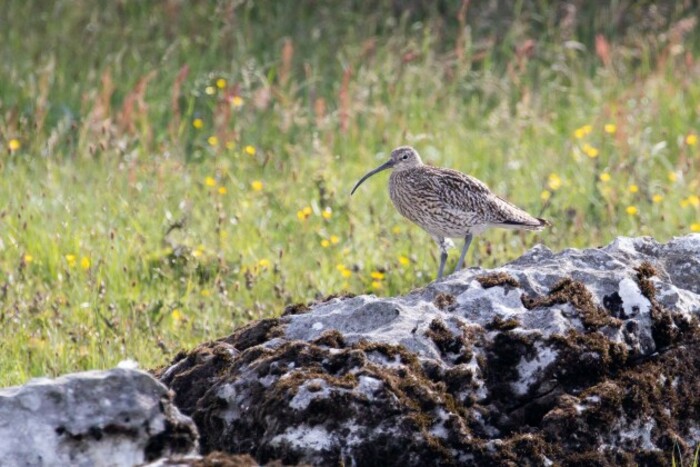 Breeding pairs of the ironic curlew have fallen to below 100 across Ireland
Breeding pairs of the ironic curlew have fallen to below 100 across Ireland
Several conservation groups and ecology experts have expressed concerns with the rollout of the recommendations to date, however.
A letter sent by BirdWatch Ireland to the Minister of State for Heritage, Malcolm Noonan, in December 2020 released to Noteworthy under AIE outlined the group’s concern that “there has been no progress on implementing the recommendations of the curlew Task Force”.
Earlier this year, the National Biodiversity Forum also outlined its concern, stating that the recommendations to the Minister “have yet to be acted upon and must now be implemented to save this critically endangered species”.
Under AIE, Noteworthy asked the Department of Housing – under which the NPWS sits – for any update reports or spreadsheets outlining progress with the recommendations but did not receive any in the records released.
We did receive an April 2021 email from an NPWS staff member to senior management in which they outlined some important steps taken to date to meet recommendations, including audits on agricultural land in curlew territories, research on breeding populations, and work on predation control.
There was, however, no updates on meeting some substantial recommendations in the areas of forestry, bogs, and planning, as well as the lynchpin recommendation of developing a national species action plan with a multi-stakeholder steering group.
Noteworthy asked the Department for the most up to date status on implementation of the recommendations but it did not provide any details.
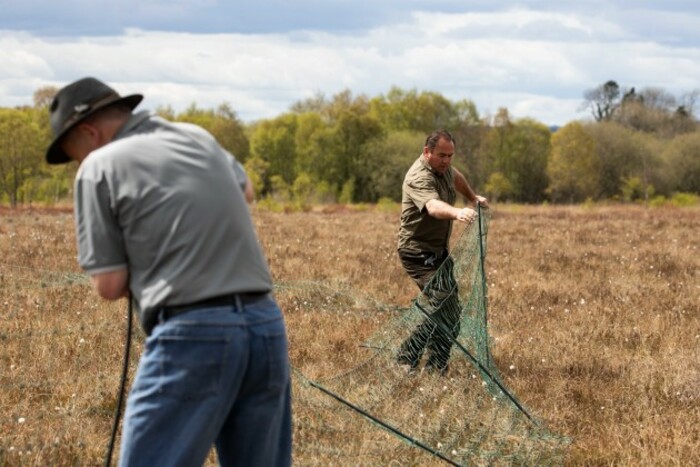 Curlew conservation programme team putting up fencing to protect curlew nest from predators
Curlew conservation programme team putting up fencing to protect curlew nest from predators
Unique efforts falling short without support
One task force recommendation that has been acted on is the continuation of the curlew conservation programme (CCP), a locally-led scheme set up by the NPWS in 2017, working closely with farmers, landowners and other local interests to protect curlew nests and improve habitat at important breeding sites in nine areas across the country.
The programme has shown success with its 2020 report stating that 42 pairs were confirmed breeding, with the possibility of an additional 22 pairs identified. At least 26 reached hatching stage and a minimum of 57 chicks hatched. From this, it is confirmed that a minimum of 14 pairs produced chicks that made it to fledglings.
According to Hubert Servignat of the CCP, the “uniqueness of the project”, and, in turn its success, lies heavily on the strong local involvement of landowners and farmers “in trying to conserve and restore habitat” for the species.
“They all speak with fondness of the melancholic call of the curlew echoing in the upland bogs,” Servignat said, pointing to the species’ ironic place in the Irish countryside “up until a very recent past”.
Despite these strong efforts, as well as on-the-ground work with farmers through other agri-environmental schemes and results-based projects, the 2020 report found that “there are still many more and stronger negative forces that have brought the population to the verge of extinction”.
“Policies and circumstances and activities leading to habitat loss and degradation need to be urgently addressed,” the report said, stressing that the curlew task force has “provided clear recommendations in this regard”.
While the CCP has played its part to implemented recommendations, Servignat told Noteworthy that “the status of curlew as a breeding species in Ireland remains as precarious as ever,” with populations falling to such low levels that the “loss of one egg or chick is of considerable consequence”.
Lack of definitions hurting species
The lack of a concrete definition or protection of high nature value farmland (HNVf) is also damaging to threatened habitats such as heathlands and bogs that act as reservoirs for the curlew, hen harrier, and various other species traditionally found across the country.
A long-term lack of protection for such areas has had a big impact on species as lands were drained for more intensive agriculture or peatlands planted with conifer plantations – “of low biodiversity value” according to the NPWS - as part of a State-led forestry model.
While the State’s latest report to the UN Convention on Biological Diversity in 2019 – prepared by the NPWS – said that conditions of planting have been tightened in recent years, it stressed that “there is still no working definition of ‘high nature value’ farming to guide where planting should or should not occur”.
This continues to cause issues, with 2020 academic research showing that the highest levels of recent afforestation “overlapped with areas where the highest species richness” for farmland and woodland birds exists.
This is also seen in records released to Noteworthy by the NPWS that is consulted by the Forest Service on forestry licence applications.
In one case, the NPWS found that an application was made to afforest a parcel of land in Co Cavan that contains heath habitat “vitally important” to several bird species in trouble, including meadow pipit, skylark, snipe, cuckoo and hen harrier.
“Afforestation of these habitats would equate [to a] massive loss of rare habitats, biodiversity and be incompatible with the free movement of species such as the EU protected species,” the NPWS submission found.
Several similar issues were identified in another application for afforestation in August 2018 near Drumistin in Co Leitrim that the ranger said would be “detrimental” to the adjacent SAC already heavily planted.
Conifer plantations, they said, have led to the “negative decline” in the status of the habitats that host important under pressure birds of prey including peregrine falcon, hen harrier, merlin and kestrel, as well as hosting the once common but now vulnerable marsh fritillary butterfly. Golden eagle was also “seen in the facility”, the report said.
The licence was not granted in this case. However, as reported in our SPRUCED UP investigation into the forestry licensing system, not all licences on HNVf are refused and many appeals are taken to the Forestry Appeals Committee or the courts.
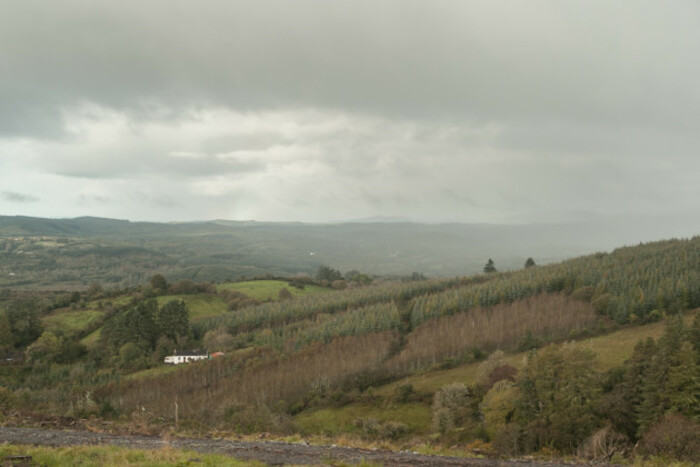 Conifer plantations in high nature value uplands in Co Leitrim
Conifer plantations in high nature value uplands in Co Leitrim
A smarter approach needed
A key criticism of the overall lack of progress with biodiversity plans and targets in Ireland rests with the structure of the plans themselves, in particular, the lack of smart targets – those that are specific, measurable, achievable, realistic, and time bound.
This is reflected in the fact that 88 of the 119 actions in our current biodiversity action plan are of an ongoing or open-ended nature. This lack of smart targets, the National Biodiversity Forum has said, makes detailed review of progress difficult.
“[The] current monitoring and evaluation systems for biodiversity actions do not capture the true impact on or benefit for biodiversity,” it said, calling for measurable results-based actions with a “strong evidence-base for effectiveness” in the next plan to come into effect in 2022.
This issue was also highlighted in a 2020 review of spending on biodiversity protection funded by the Irish Research Council and the NPWS to help determine the type of expenditure needed to implement the next action plan.
The review, carried out by UCD academics, found that the open-ended nature of actions “renders the implementation of some targets difficult to ascertain and may hinder any future costing exercise”.
According to one of the authors of the report, Dr Shane McGuinness, the targets are “unfortunately” informed by “decades, if not a century or more, of existing policy that probably prohibits setting firm targets”. This, he said, makes valuing targets, or building what’s called a costing framework around them, “extremely difficult”.
The State is currently looking for expert support to draft the next biodiversity action plan and nature conservation experts are clear that structural changes will have to come fast, with so many species and the habitats that they depend on under threat.
“Everything is underpinned by biological life that we’re sitting on top of – biodiversity that we need to protect life,” stressed McGuinness.
“We need to stop nibbling around the edges of this and start to plan long-term because otherwise we’re going to spend the next decade using sticking plasters.”
—
In Part Two, out tomorrow, we examine the financing of biodiversity protection in Ireland and the impact of funding gaps in more detail.
—

This investigation was carried out by Niall Sargent of Noteworthy. It was proposed and funded by you, our readers.
Noteworthy is the investigative journalism platform from The Journal. You can support our work by helping to fund one of our other investigation proposals or submitting an idea for a story. Click here to find out more >>
We also have a number of environmental investigation proposals which you can view here.


